There’s always a lot of debate as to whether our favourite chocolate bars have got smaller since we enjoyed them as children, or whether we just remember them differently as they looked so much bigger in our little hands back then. In the case of Wagon Wheels, Burton’s Biscuits (who also make Maryland cookies and Jammie Dodgers, yum) say it’s just that: our grubby digits have got bigger and Wagon Wheel’s definitely haven’t got smaller. Unless anybody has got an old Wagon Wheel from thirty years ago preserved at the back of their cupboard, I guess the argument will rumble on…
Wagon Wheels were always exciting; small hands or not they were a big treat and felt much more satisfying than a less sizeable bar like a Penguin or a Club (not that I ever turned either of them down you understand…). Made of two round biscuits, filled with marshmallow and completely covered in milk chocolate, they were really filling; definitely not the sort of thing you were given as a pre-dinner snack. Deconstructed (i.e. if you pulled them apart and ate each bit separately), the biscuit itself actually wasn’t that nice. It had a faintly stale taste to it although if you ate the whole thing as one then the chocolate and mallow overwhelmed that and it tasted fairly scrumptious. (And to be fair, that was a long time ago; I haven’t eaten a Wagon Wheel for ages, so I’m sure the biscuit has been improved since then.)
They were first introduced to the UK at the Olympia Food Fair in 1948, as ‘Weston Wagon Wheels’. The biscuits themselves were round by design, to replicate the wheels on a wagon (I expect you’d worked that out for yourself) and were an attempt to cash in on the popularity of the Wild West at that time. Their creator, Garry Weston was the son of Willard Garfield Weston, a business man, MP, philanthropist and, in 1966, the ‘second most profitable merchandiser in the world’. Wagon Wheels began being manufactured from a factory in Slough (then in Buckinghamshire, now in Berkshire) until production moved to Llantarnam in South Wales in the 1980s. Garry and his two brothers took over his father’s foodstuff business in the UK, Canada and Australia and all three countries got to (and indeed, still do) enjoy the gooey deliciousness of Wagon Wheels. There are a few differences: Australia adds jam to their Wagon Wheels as standards, while in the UK we don’t, although we do now produce a jammy edition. (We have also enjoyed caramel and orange versions in the past.)
And obviously, as we’ve already learnt, the Oz version is bigger in diameter than our own but we win in the thickness department; the UK is definitely more generous with the filling. And as for the Canadian Wagon Wheel? It is much smaller than both the others, with raspberry jam in the centre of the marshmallow.
Now sold all around the world, over 125 million Wagon Wheels are sold each year, although, as with most popular snacks there are websites devoted to creating your own version of them, so you could make them yourself if you were so inclined – the size of actual wagon wheels if you fancied!




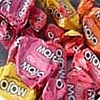


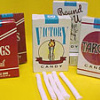
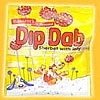

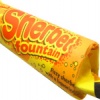


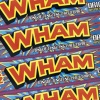
Do You Remember Wagon Wheels ?
Do You Remember Wagon Wheels ?